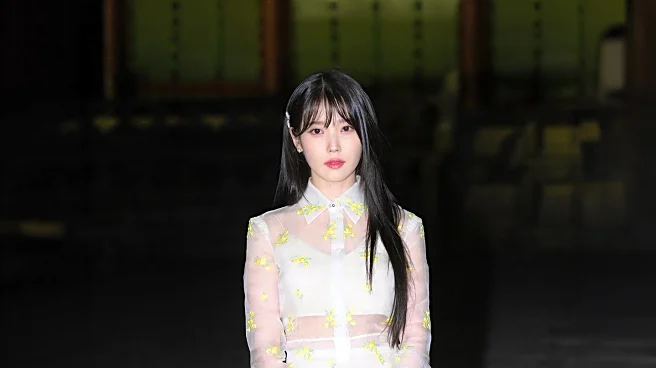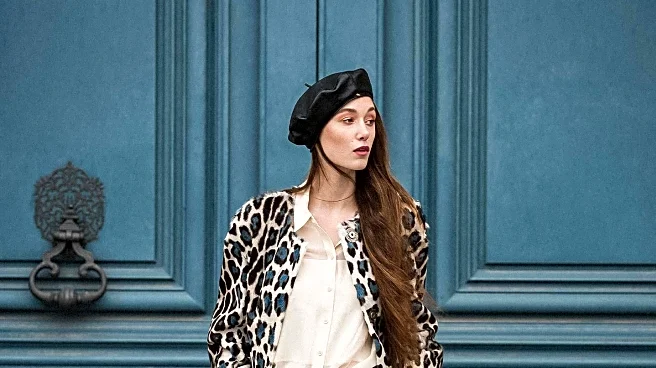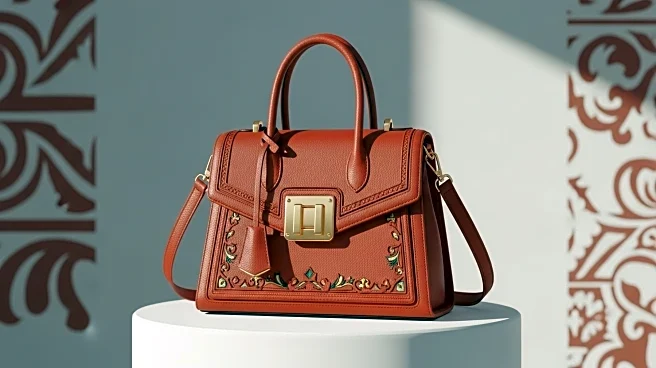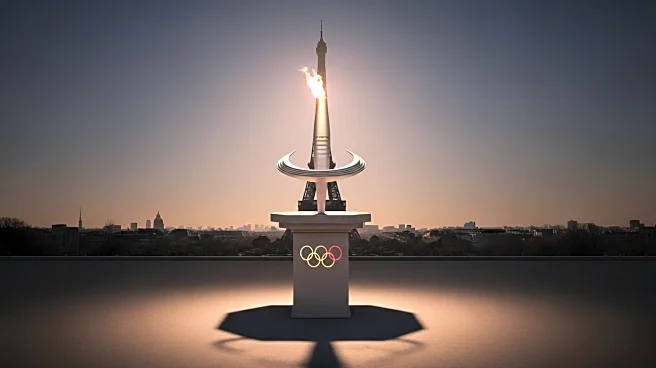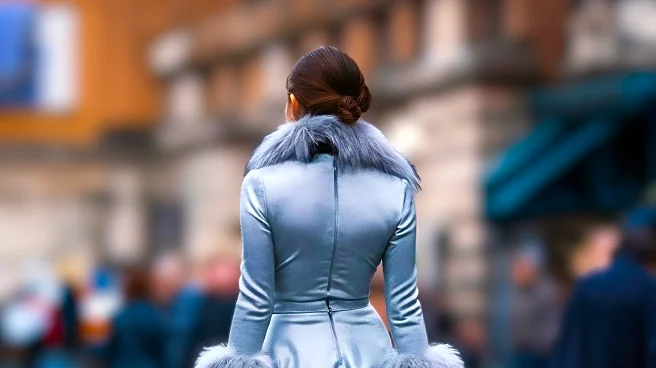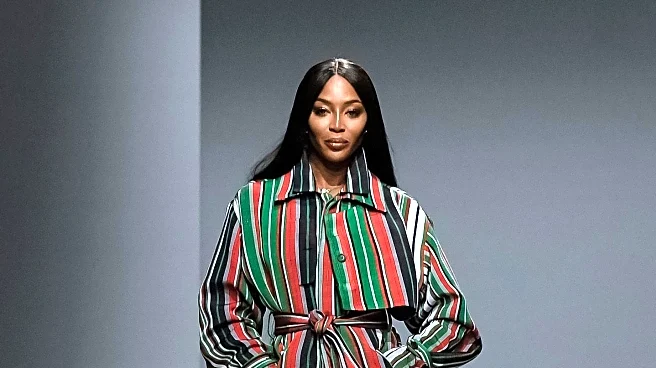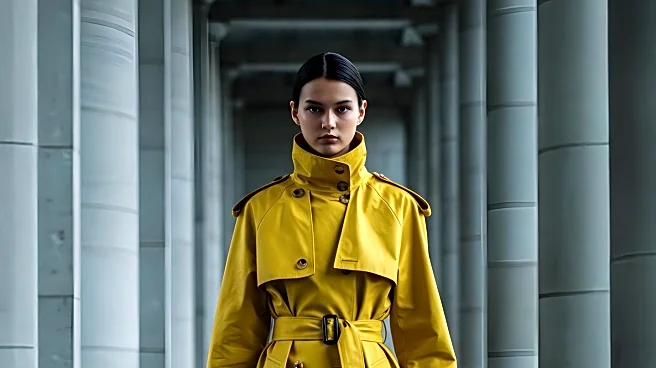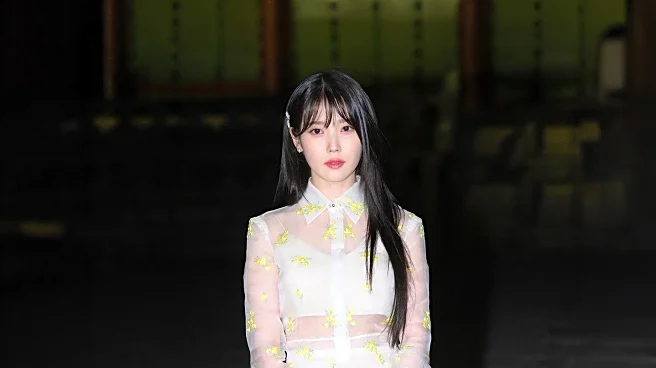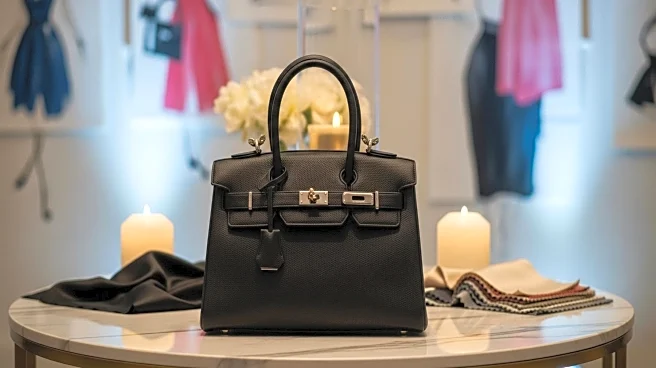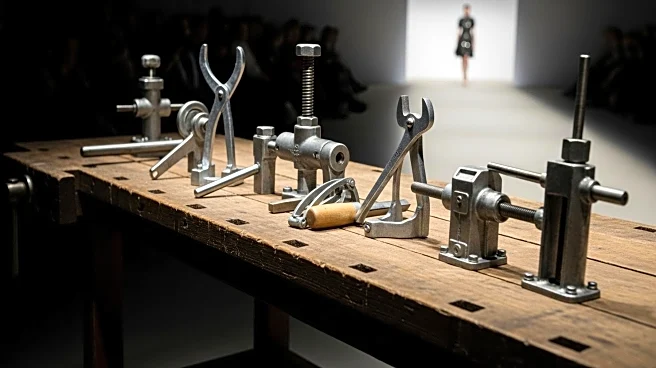What is the story about?
What's Happening?
Miuccia Prada's Miu Miu presented its Spring/Summer 2026 collection at Paris Fashion Week, offering a sense of stability amidst France's political instability. The show took place at the Iéna Palace in Paris, featuring a collection that balanced playfulness with pragmatism. The opening piece was a deep blue warehouse apron dress, setting a tone of grounded elegance. Miu Miu, known for its irreverent style, continued to explore themes of femininity and work through its designs. The collection included floral minidresses and aprons, symbolizing women's work and protection. Notable appearances included actor Richard E. Grant and Milla Jovovich, who showcased the apron motif in unique interpretations.
Why It's Important?
The presentation of Miu Miu's collection during a period of political instability in France highlights the resilience of the luxury fashion industry. Miuccia Prada's focus on themes of women's work and protection through fashion reflects broader societal conversations about gender roles and labor. The collection's emphasis on aprons as symbols of work and care resonates with ongoing discussions about women's contributions in various sectors. Miu Miu's ability to maintain its creative vision despite external challenges underscores the brand's influence and adaptability in the fashion world.
What's Next?
As Paris Fashion Week continues, Miu Miu's collection may inspire other designers to explore themes of resilience and femininity in their work. The fashion industry will likely continue to navigate the complexities of political and economic challenges while maintaining its creative output. Miuccia Prada's approach to using fashion as a medium for social commentary may encourage other brands to address similar themes in future collections.
Beyond the Headlines
Miu Miu's exploration of femininity and work through fashion raises questions about the role of clothing in expressing identity and societal values. The use of aprons as symbols of protection and care invites reflection on the historical and cultural significance of garments traditionally associated with women's labor. This collection may contribute to ongoing dialogues about the intersection of fashion, gender, and social change.
AI Generated Content
Do you find this article useful?
